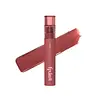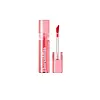What's inside
What's inside
 Key Ingredients
Key Ingredients

 Benefits
Benefits

 Concerns
Concerns

 Ingredients Side-by-side
Ingredients Side-by-side

Water
Skin ConditioningIsododecane
EmollientDimethicone
EmollientVinyl Dimethicone/Methicone Silsesquioxane Crosspolymer
Butylene Glycol
HumectantDisteardimonium Hectorite
StabilisingTricalcium Phosphate
AbrasiveDiisostearyl Malate
EmollientDimethicone/Vinyl Dimethicone Crosspolymer
Skin ConditioningSorbitan Isostearate
EmulsifyingLauryl Polyglyceryl-3 Polydimethylsiloxyethyl Dimethicone
Skin ConditioningDiglycerin
HumectantCetyl PEG/PPG-10/1 Dimethicone
EmulsifyingStearyl Dimethicone
EmollientMagnesium Sulfate
1,2-Hexanediol
Skin ConditioningDiphenylsiloxy Phenyl Trimethicone
Skin ConditioningPropylene Carbonate
SolventCI 73360
Cosmetic ColorantPolyglyceryl-3 Diisostearate
EmulsifyingCI 77891
Cosmetic ColorantCI 77491
Cosmetic ColorantOctadecene
SolventAcrylates/Polytrimethylsiloxymethacrylate Copolymer
Skin ConditioningCI 77499
Cosmetic ColorantPolyglyceryl-3 Polydimethylsiloxyethyl Dimethicone
Skin ConditioningParfum
MaskingSilica Dimethyl Silylate
EmollientSorbitan Olivate
EmulsifyingCI 15985
Cosmetic ColorantTriethoxycaprylylsilane
CI 17200
Cosmetic ColorantEthylhexylglycerin
Skin ConditioningSorbitan Sesquioleate
EmulsifyingAluminum Hydroxide
EmollientCI 42090
Cosmetic ColorantTocopherol
AntioxidantPentaerythrityl Tetra-Di-T-Butyl Hydroxyhydrocinnamate
AntioxidantWater, Isododecane, Dimethicone, Vinyl Dimethicone/Methicone Silsesquioxane Crosspolymer, Butylene Glycol, Disteardimonium Hectorite, Tricalcium Phosphate, Diisostearyl Malate, Dimethicone/Vinyl Dimethicone Crosspolymer, Sorbitan Isostearate, Lauryl Polyglyceryl-3 Polydimethylsiloxyethyl Dimethicone, Diglycerin, Cetyl PEG/PPG-10/1 Dimethicone, Stearyl Dimethicone, Magnesium Sulfate, 1,2-Hexanediol, Diphenylsiloxy Phenyl Trimethicone, Propylene Carbonate, CI 73360, Polyglyceryl-3 Diisostearate, CI 77891, CI 77491, Octadecene, Acrylates/Polytrimethylsiloxymethacrylate Copolymer, CI 77499, Polyglyceryl-3 Polydimethylsiloxyethyl Dimethicone, Parfum, Silica Dimethyl Silylate, Sorbitan Olivate, CI 15985, Triethoxycaprylylsilane, CI 17200, Ethylhexylglycerin, Sorbitan Sesquioleate, Aluminum Hydroxide, CI 42090, Tocopherol, Pentaerythrityl Tetra-Di-T-Butyl Hydroxyhydrocinnamate
Water
Skin ConditioningOctyldodecanol
EmollientTrimethylsiloxyphenyl Dimethicone
Sorbitan Stearate
EmulsifyingEthylcellulose
Cetearyl Alcohol
EmollientPolysorbate 60
EmulsifyingAcrylates Copolymer
Polyacrylate-13
Polyisobutene
Polysorbate 20
EmulsifyingSorbitan Isostearate
Emulsifying1,2-Hexanediol
Skin ConditioningHydroxyacetophenone
AntioxidantLimnanthes Alba Seed Oil
Skin ConditioningTriethanolamine
BufferingOlea Europaea Fruit Oil
MaskingTocopherol
AntioxidantGlycerin
HumectantPrunus Persica Fruit Extract
AbrasivePhenoxyethanol
PreservativeEthylhexylglycerin
Skin ConditioningSimmondsia Chinensis Seed Oil
EmollientButyrospermum Parkii Butter
Skin ConditioningPrunus Amygdalus Dulcis Oil
Skin ConditioningHelianthus Annuus Seed Oil
EmollientHydroxyethylcellulose
Emulsion StabilisingLilium Speciosum Flower Oil
MaskingOsmanthus Fragrans Flower Extract
MaskingCI 77491
Cosmetic ColorantCI 77492
Cosmetic ColorantCI 77499
Cosmetic ColorantCI 16255
Cosmetic ColorantCI 19140
Cosmetic ColorantCI 42090
Cosmetic ColorantCI 77891
Cosmetic ColorantCI 17200
Cosmetic ColorantWater, Octyldodecanol, Trimethylsiloxyphenyl Dimethicone, Sorbitan Stearate, Ethylcellulose, Cetearyl Alcohol, Polysorbate 60, Acrylates Copolymer, Polyacrylate-13, Polyisobutene, Polysorbate 20, Sorbitan Isostearate, 1,2-Hexanediol, Hydroxyacetophenone, Limnanthes Alba Seed Oil, Triethanolamine, Olea Europaea Fruit Oil, Tocopherol, Glycerin, Prunus Persica Fruit Extract, Phenoxyethanol, Ethylhexylglycerin, Simmondsia Chinensis Seed Oil, Butyrospermum Parkii Butter, Prunus Amygdalus Dulcis Oil, Helianthus Annuus Seed Oil, Hydroxyethylcellulose, Lilium Speciosum Flower Oil, Osmanthus Fragrans Flower Extract, CI 77491, CI 77492, CI 77499, CI 16255, CI 19140, CI 42090, CI 77891, CI 17200
 Reviews
Reviews

Ingredients Explained
These ingredients are found in both products.
Ingredients higher up in an ingredient list are typically present in a larger amount.
1,2-Hexanediol is a synthetic liquid and another multi-functional powerhouse.
It is a:
- Humectant, drawing moisture into the skin
- Emollient, helping to soften skin
- Solvent, dispersing and stabilizing formulas
- Preservative booster, enhancing the antimicrobial activity of other preservatives
Ci 17200 is a synthetic reddish-purple dye.
Ci 42090 is a synthetic dye created from petroleum. It is used to give a bright blue color to cosmetics, medicine, and food.
Ci 77491 is also hydrated iron III oxide. It's sole purpose is to give a red/pink hue to products.
Iron III oxides are classified as inorganic chemicals for coloring.
Synthetically created Ci 77491 is considered safer than those naturally found. This is because the synthetically created version may contain less impurities. Iron oxides are generally non-toxic and non-allergenic.
Learn more about CI 77491Ci 77499 is also hydrated iron III oxide. It is created from mixing red and black iron oxides. This helps give shades of darkness to a product.
Iron III oxides are classified as inorganic chemicals for coloring.
Ci 77891 is a white pigment from Titanium dioxide. It is naturally found in minerals such as rutile and ilmenite.
It's main function is to add a white color to cosmetics. It can also be mixed with other colors to create different shades.
Ci 77891 is commonly found in sunscreens due to its ability to block UV rays.
Learn more about CI 77891Ethylhexylglycerin (we can't pronounce this either) is commonly used as a preservative and skin softener. It is derived from glyceryl.
You might see Ethylhexylglycerin often paired with other preservatives such as phenoxyethanol. Ethylhexylglycerin has been found to increase the effectiveness of these other preservatives.
Sorbitan Isostearate is an emulsifer and cleaning agent. It is created from isostearic acid and sorbitol.
As an emulsifier, Sorbitan Isostearate prevents oils and water from separating.
Due to its isostearic acid base, it may not be safe for Malassezia or fungal acne.
Learn more about Sorbitan IsostearateTocopherol (also known as Vitamin E) is a common antioxidant used to help protect the skin from free-radicals and strengthen the skin barrier. It's also fat soluble - this means our skin is great at absorbing it.
Vitamin E also helps keep your natural skin lipids healthy. Your lipid skin barrier naturally consists of lipids, ceramides, and fatty acids. Vitamin E offers extra protection for your skin’s lipid barrier, keeping your skin healthy and nourished.
Another benefit is a bit of UV protection. Vitamin E helps reduce the damage caused by UVB rays. (It should not replace your sunscreen). Combining it with Vitamin C can decrease sunburned cells and hyperpigmentation after UV exposure.
You might have noticed Vitamin E + C often paired together. This is because it is great at stabilizing Vitamin C. Using the two together helps increase the effectiveness of both ingredients.
There are often claims that Vitamin E can reduce/prevent scarring, but these claims haven't been confirmed by scientific research.
Learn more about TocopherolWater. It's the most common cosmetic ingredient of all. You'll usually see it at the top of ingredient lists, meaning that it makes up the largest part of the product.
So why is it so popular? Water most often acts as a solvent - this means that it helps dissolve other ingredients into the formulation.
You'll also recognize water as that liquid we all need to stay alive. If you see this, drink a glass of water. Stay hydrated!
Learn more about Water